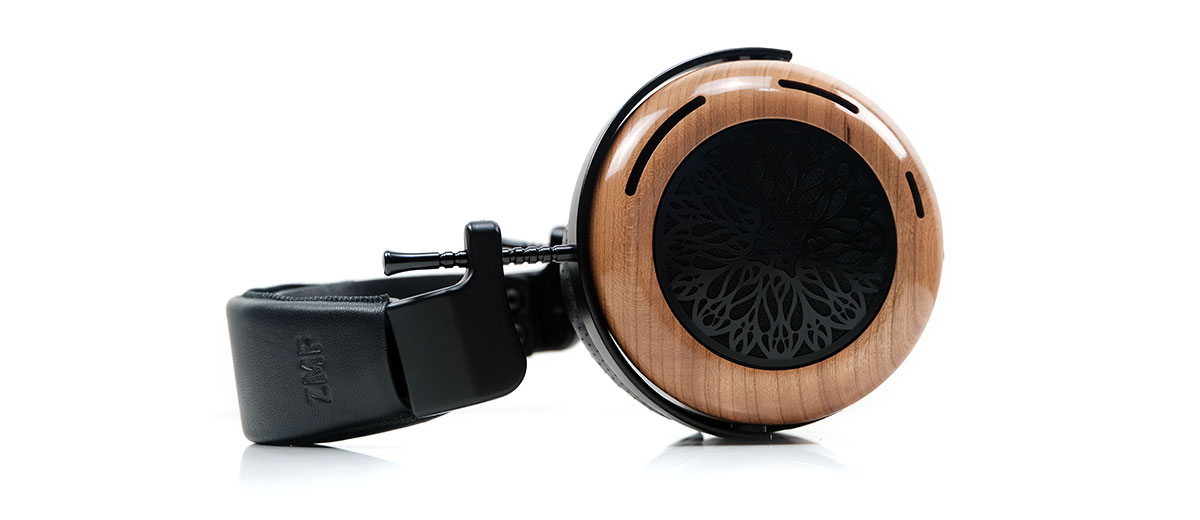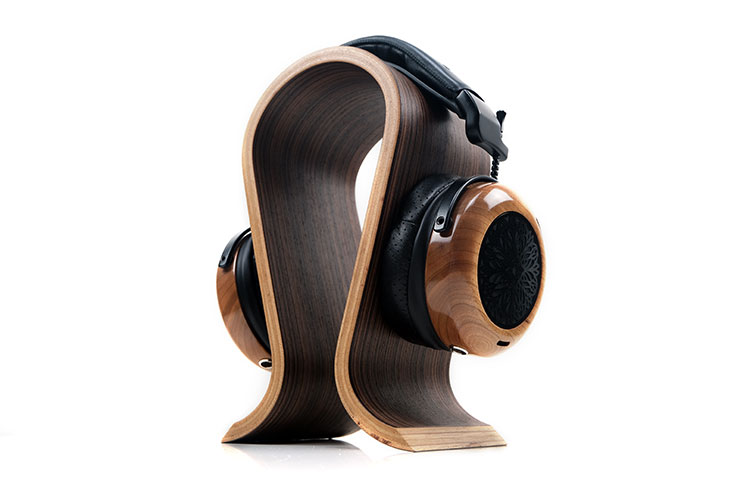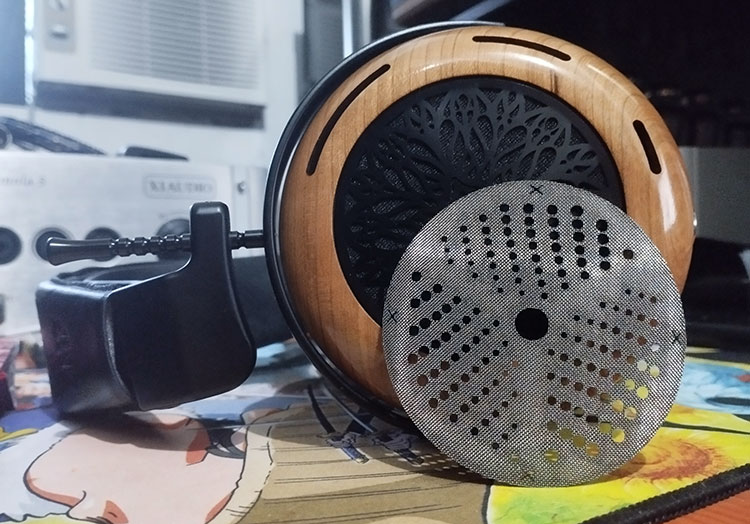Sound Impressions
Summary
The Atrium is what I would call a “mood machine”. It has this beautiful intoxicating sound signature, gloriously smooth dissonance-free timbre, and a vast yet immersive staging quality to suck you right in.
I could listen to the Atrium for hours and not once feel fatigued, bored, or waiting for that next treble nasty to make me reach for the fast forward button. It hits hard without overwhelming and with a tasty elasticity to its bass punch that gives it some pleasing character.
On a macro level, it’s a monster of a headphone performance and with the right setup, it can create a very complex holographic soundstage. It is arguable though that micro detail is perhaps not as forceful in terms of grabbing your attention. Some might even call the tuning relaxed in parts and slightly to the ‘dark side’ of the spectrum for the highs.
That’s why I called it the ‘mood machine’, it’s about emphasis and coloration in the right places to evoke a mood of euphony or provoke an emotional response to what you are hearing rather than exacting reference level analysis.
In general, I found the Atrium to respond best to either a punchy or clean sounding amp capable of adjusting to high impedance headphones or an amplifier that really maximizes the staging potential of the headphones. Either way, a good supply of power will make the Atrium come alive with some excellent dynamics.
Frequency Response
So this is what is defined as ‘ZMF Neutral’ and handily Zach and the team have posted some charts there to give you a clear vision of what means for the Atrium.
For me, it is a raw response that is more on the gentle side of the Harmon Target Response curve with just a slight attenuation sub-100Hz combined with a staggered drop just beyond the mids from 5k onwards to 10k.
Those fades at the extreme ends take a little steam out of the Atrium in terms of weighted aggression on the very low-end with the bias switching up instead to a slow rise around 100-200Hz for the impressive mid-bass punch and some decent head gain around 1-3k that help bring out some excellent vocal presence.
ZMF has resisted sucking out that upper bass and lower mids as far as I can see and true enough the performance lacks the dreaded tinny thin sound you can sometimes get with exaggerated V-shaped sound signatures.
The Atrium is perfect for bass guitar pluck texture and density which I tend to pick up quite quickly in the music I listen to. A strong bass guitar presence with some additional warmth can add ‘pleasing wetness’ to the music, so it is essential for me to hear that shine through.
There are a couple of dips, notably from 4-5k and again from 6-7k and that is where you might perceive some of the micro-detail is falling back a bit in terms of sparkle and presence. The Atrium does not have that same fizz as some planar headphones in the lower treble. It is a softer approach where sibilance and splashiness are downplayed in favor of a smoother overtone.
Timbre
Part one of the two trump cards played by the Atrium is that coloration. I already complimented its low-end performance, particularly with its natural to slightly rich timbral quality to bass string plucks.
I also compared the Atrium with the Empyrean on page 3, a planar headphone that I rank very highly for a tuning that is tremendously smooth for vocal performances. If anything, the Atrium timbre is sweeter sounding with a slightly lighter and more agile presentation.
You could be excused for worrying that this amount of smoothness would lead to an overly dull and rounded effect but it is not the case here. It is very natural and even-toned with a high degree of euphony but with just a slither of upper treble energy vocals manage to sound very clear rather than heavy-legged.
Perhaps the one tiny weakness in the timbral detail was in the way some notes broke into their sustain from the attack. This is something I picked up with comparing the Ether 2 which conveys a bit more character and shape to percussion sustain timbre when brushes or booms hit the drums lightly whereas the Atrium sound was more rigid and less revealing.
I suspect that relaxed lower treble tuning from the stock setup in some way contributes to how well some notes are defined on the micro-level. Less of an edgy attack, and not a huge amount of upper order harmonic influence to shine a light on minute details within the note texture.
Staging
This is the second of those two trump cards and probably the first thing that hits you when you try the Atrium for the first time.
It is a huge and particularly wide soundstage with a strong holographic dimension. Depth is impressive but more for its arena-type positioning of the bass than sheer power sub-50Hz. The bass punch is more forward in this regard. Vocal imaging is neutral for male vocals to slightly forward for any female vocals that cross over that 1-3k head gain response curve.
Amps and DAC pairings do play a role here because the Atrium staging is not fixed in stone and it does respond very clearly to different setups.
For example, the dCS Bartok line out from its Ring DAC into the Feliks Audio Envy gave me much more of a vertical top to bottom emphasis. That means a deeper bass response, a more physical and powerful center image, and solid vocal performances.
Switching to the Holo Audio Spring 2 DAC combined with the Cayin HA-300 MKII SET amp created a much wider soundstage with improved instrumental separation and perhaps a more laid-back center image. There is a general uptick in the perceived holographic nature of the imaging with the Atrium/HA-300 MKII pairing.
Despite the relatively relaxed lower treble, the Atrium does deliver in terms of headroom and space successfully avoiding any perceived shelving down in its high-end imaging. However, if energetic sparkle and a forward treble are ‘your bag’, then the Atrium might not be to your preference.
Perforated Mesh
As an FYI, the new perforated mesh option is not cut in the same way as the Titan version currently on sale on the ZMF website. It has a more aggressive and wider radial laser perforated area compared to the narrower Titan design. Installation is much the same with some helpful x spots to line them up to the driver and insert the screws.
The perforated mesh teases out a bit more presence in the treble but it feels targeted rather than simply a blast of sparkle. For a start, those two dips I mentioned before, the 4-5k and 6-7k regions feel a lot less scooped out.
Percussion is now much more to the fore and any subtle HF spatial cues that tended to softly float away with the solid mesh now linger and bristle with more energy. I get a sense that any existing bumps post 5k also got a few dB more presence though not by a huge amount.
What that means is not only is there an enhanced level of instrumental presence and energy in the upper mids and some aspects of the lower treble performance but also an uptick in odd harmonic influence in the mids instrumental timbre.
It’s now a relatively cleaner airier tuning post-2-3k and balances out well with the lower-end warmth without upsetting the overall balance. It is also a feistier performance and one which will draw your ear upwards a bit more in terms of staging focus compared to the stock mesh.
However, it’s not a harsh sound or even what I would classify as particularly edgy. Rather it kind of comes alive for me in a vibrant way and makes it a solid option for those pairing with softer-sounding tube amplifiers.
Be² Lamb Pads
The Be² pads basically being your ear a bit closer to the driver compared to the stock universe pads sound with a more aggressive but also a more intimate staging quality.
These pads will suit those who want a tighter center image focus with the bass to the lower midrange coming to the fore along with some enhanced lower treble presence that gives the percussion timbre a bit more upper harmonics fizz.
Do not get me wrong though, this combination still has some impressive stereo imaging but you get less of that airy width from using the universe stock pads.
Auteur Lamb Pads
These perform a lot closer to the stock universe pads for me in terms of fleshing out that holographic soundstage and it’s probably no coincidence given both have that similar deeper wedge shape. They do look frighteningly similar so keep them well apart from each other when swapping in case you mix them up.
Some subtle differences include a tiny bit less headroom, some additional mid-treble forwardness, and slightly less sub-bass presence but compensated by some increased mid-bass presence. It sounds punchier, perhaps slightly mellower, and more euphonic through the mids compared to the stock pads. A very easy-on-the-ear listening experience.
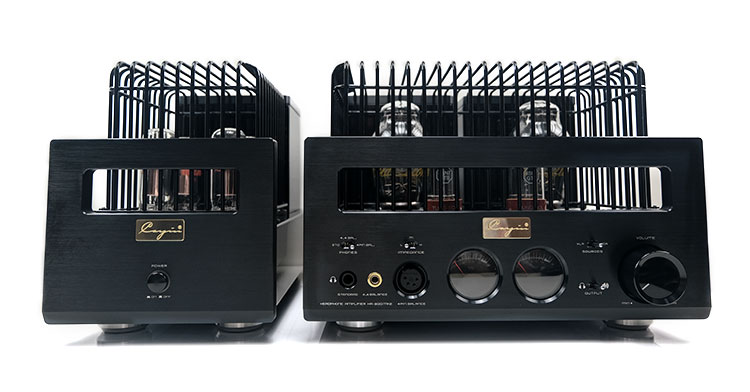
Synergy
The ZMF Headphones Atrium is rated at a hefty 300Ω and a medium 98dB sensitivity rating. For me, that means an amp pairing that is able to deliver enough voltage to maximize the potential staging headroom and dynamic range of the Atrium.
Tube Amplifier Pairings
Some impressive performances with tube amplifiers, including the soon-to-be-reviewed Cayin HA-300 MKII and the brilliant Feliks Audio Envy.
Note, however you are going to want to set both of their impedance switches to their highest levels to get the best dynamics response from the 300Ω load of the Atrium. Going balanced from both also delivers better separation though initial tube microphonics can be an issue.
If you want the Atrium to offer a strong center image with excellent sub-bass and vocal presence then the Envy will deliver that. There is a lot of ‘drive’ and impressive physicality with this combo when connected to the dCS Bartok Ring DAC.
However, the Atrium’s staging expansiveness is fleshed out a bit more with a slightly sweeter but more relaxed-sounding overtone with the Cayin HA-300 MKII. Channel and instrumental separation are also more refined with a wider more holographic soundstage when combined with Holo Audio Spring 2 DAC. You just lose maybe a little of the Envy’s weight.
Some of the two qualities of the tube pairings are drawn from their respective DAC’s sonic signature. True enough, swapping to the Holo Spring 2 DAC does produce a slightly airier wider staging quality to the Atrium/Envy pairing. However, that centered, deep and powerful sound of the Envy still resonates for me in the Atrium performance.
When switching back to the HA-300 MKII paired with the Bartok Ring DAC it still lacks that Envy physicality but I still get that lateral stretch and spaciousness from the Holo pairing in the staging shape of the Atrium performance. There is also a little more treble decay lingering in the HA-300 MKII which gives it that sweeter timbral quality for cymbal and hi-hat strikes.
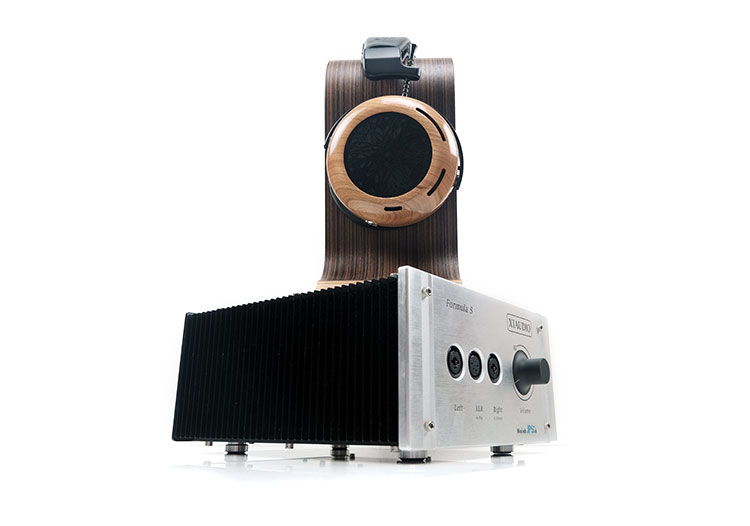
Solid-State Pairings
There also did seem to be a degree of trade-off between heft and air with the Atrium and our tested SS amps. For example, the Chord Electronics Hugo TT2 was the smoothest for vocals, perhaps the most mid-forward with excellent micro-detail out to the furthest edges of its soundstage.
However, depth seems underplayed with the Atrium/TT2, and perhaps a reason why I felt drawn into the vocals a little more. Still very smooth though which suggests the TT2 DAC would be a formidable pairing with gutsier amps when using the Atrium.
Both the XI Audio Formula S and the Ferrum ERCO did provide a heftier bass response which I really preferred. I was prepared to give up the sheer resolution and speed of the TT2 with perhaps the XI Audio Formula/Atrium pairing coming closer to that airy extension from the Chord setup.
The ERCO was the warmer of the two with the Atrium but again, DACs do play a huge role here. With the Formula S powered by the FiiO M17’s line-out and by iFi Audio’s iPower Elite, you get great dynamics but also a cleaner tone. The ERCO’s own DAC is the smoother of the two and slightly weightier in the Atrium’s lower mids.
The Atrium is perfectly fine with a clean sound but if you want to keep it very natural sounding then balancing that out with a combo that delivers a good bass response is important. Both the ERCO and the Formula S had no issues digging fairly deep with the Formula S generating the more agile and dynamic bass presentation.
For airiness and treble shine, the Formula S also does a bit better compared to the ERCO which instead, nicely fleshes out the mids delivering a juicer vocal presence from the Atrium.

